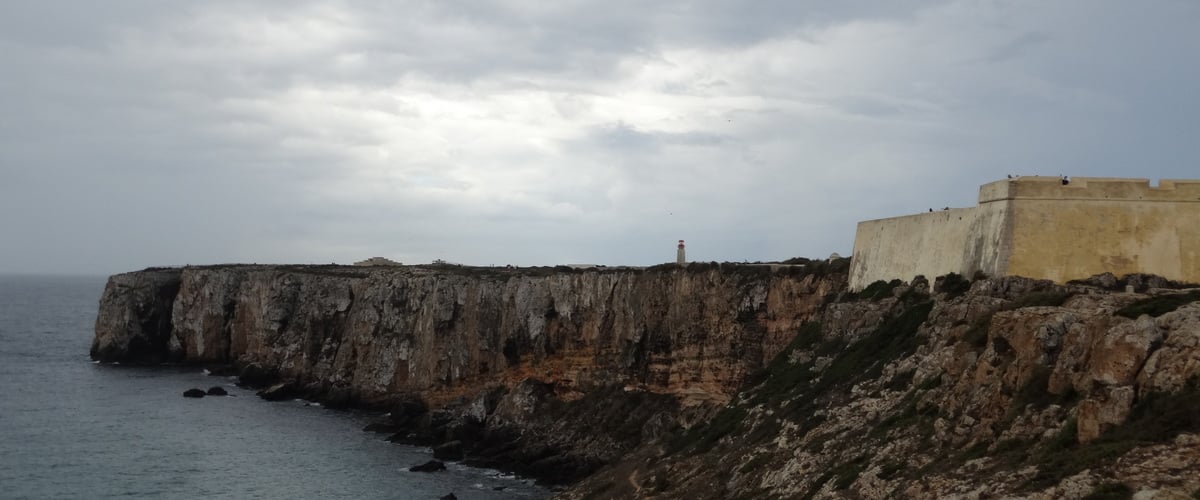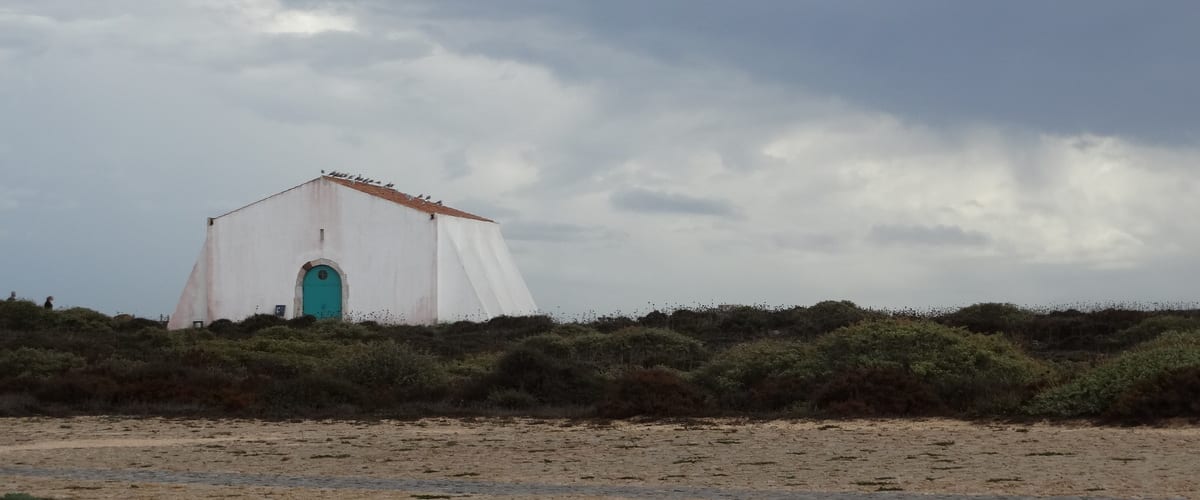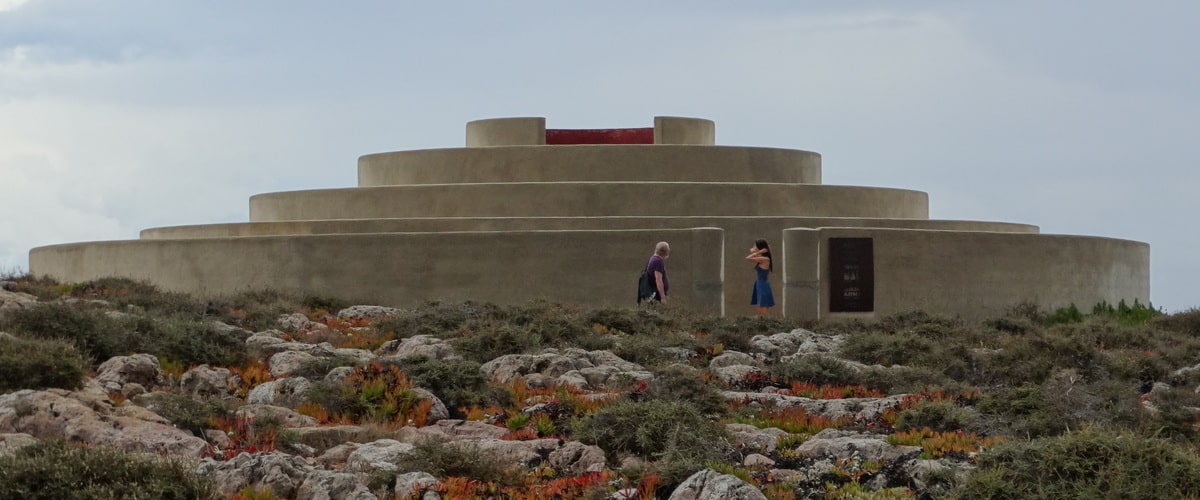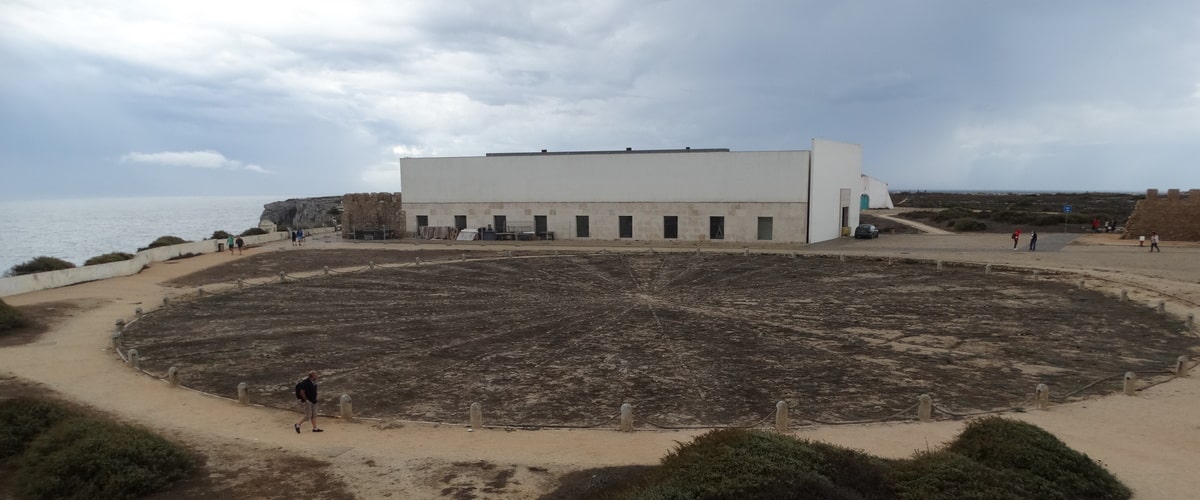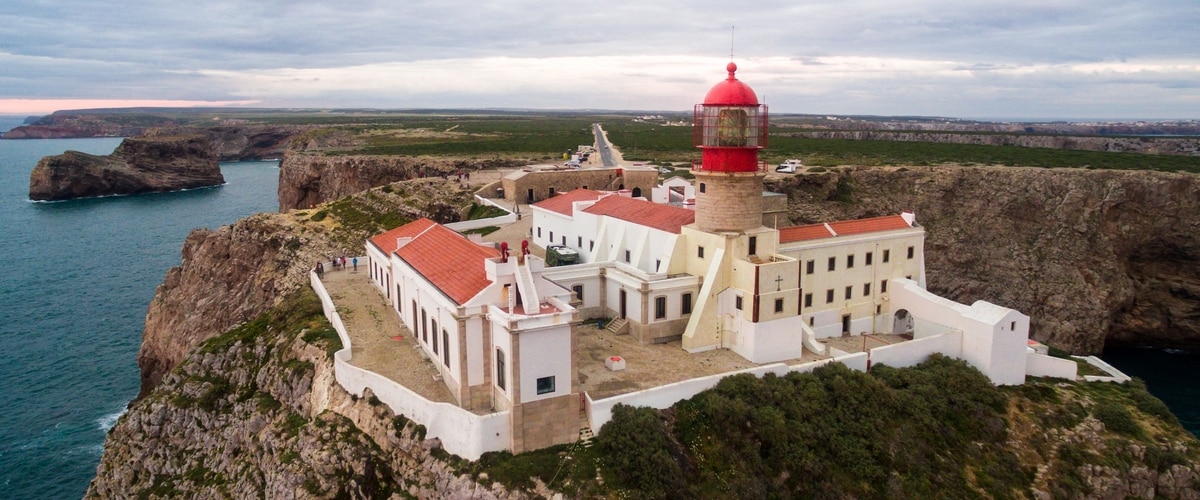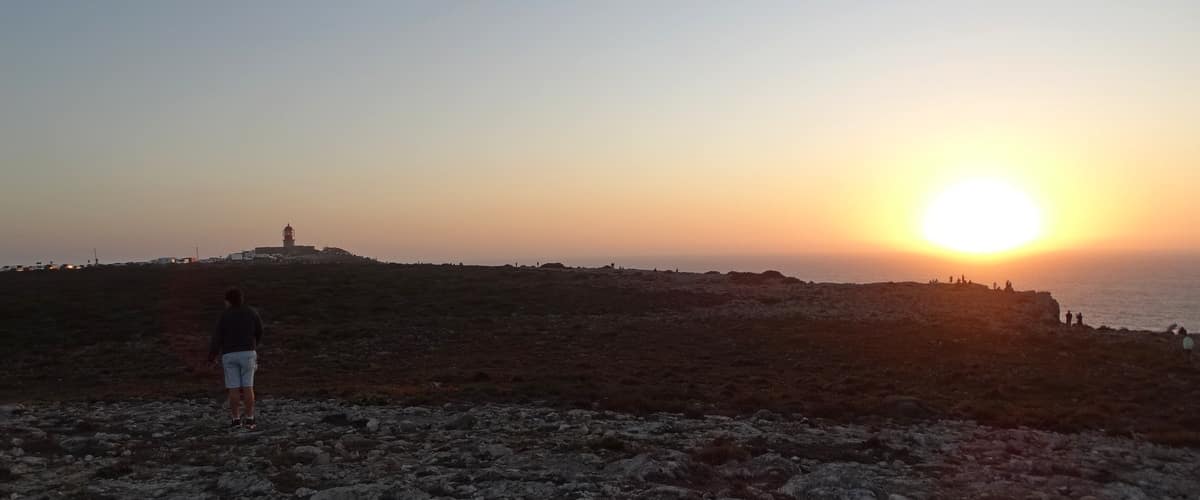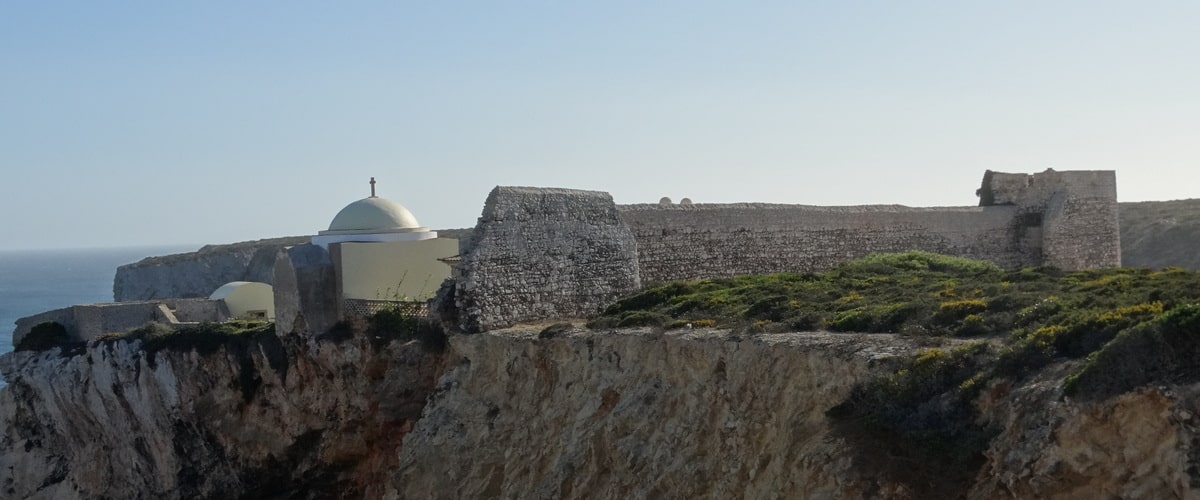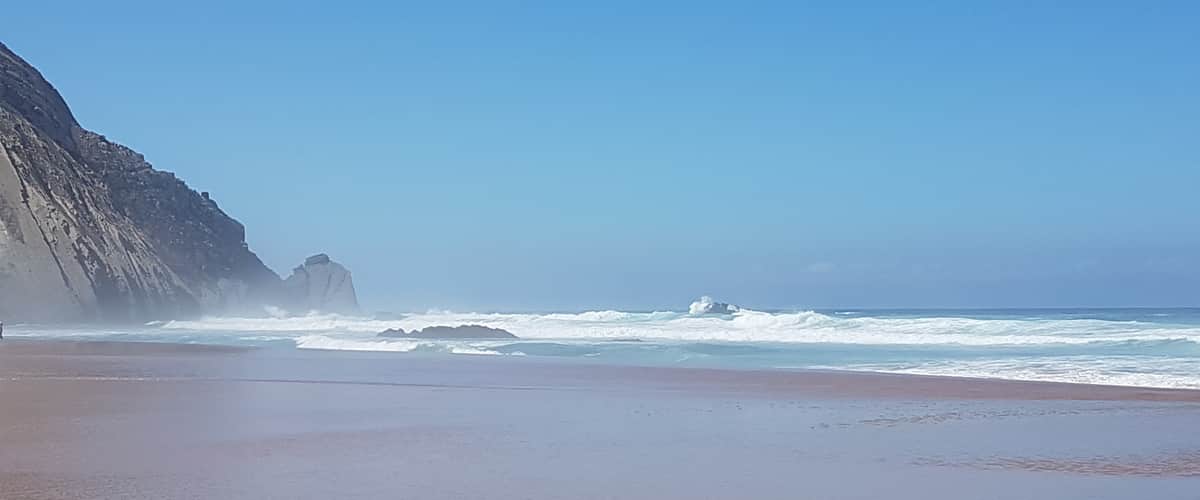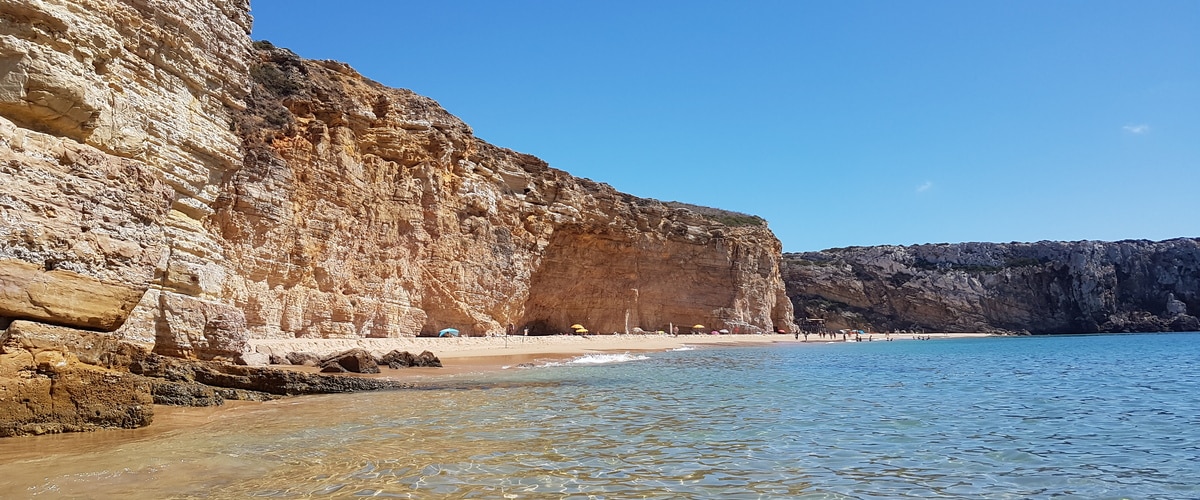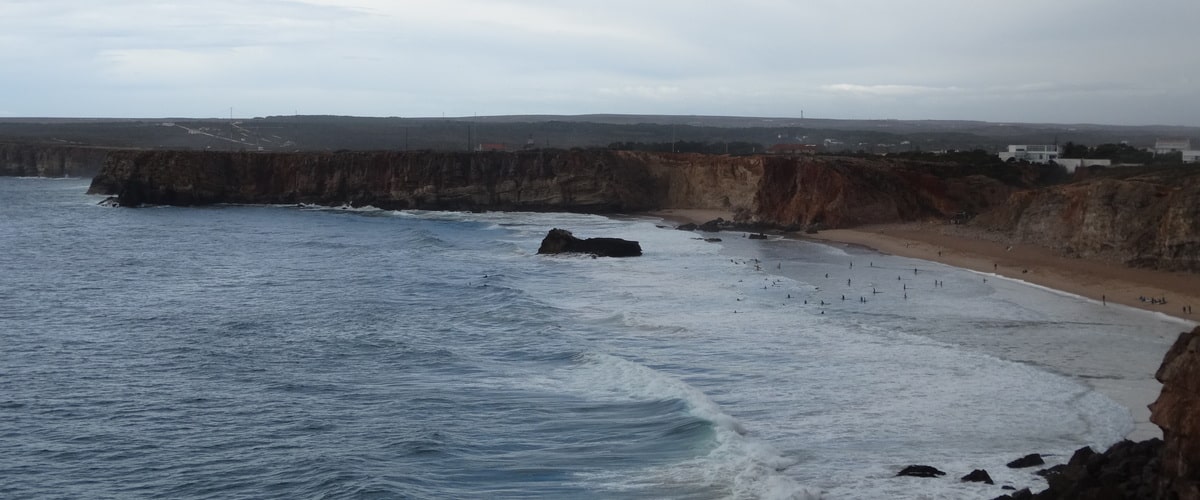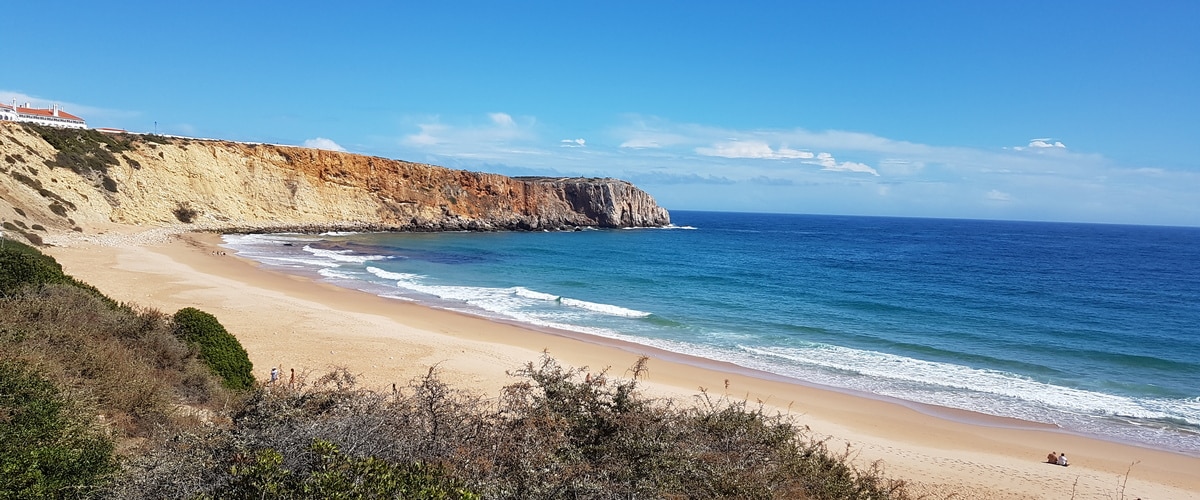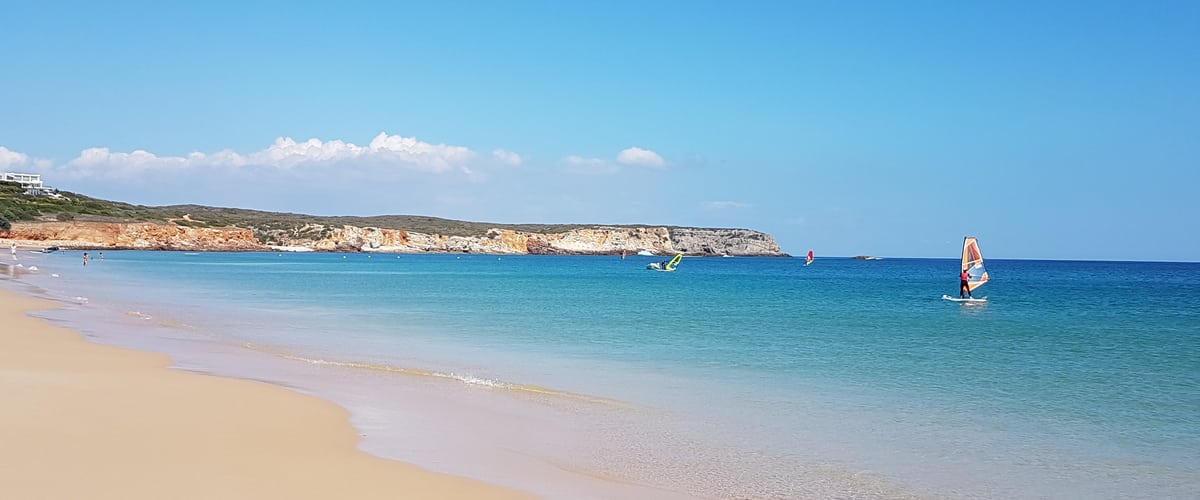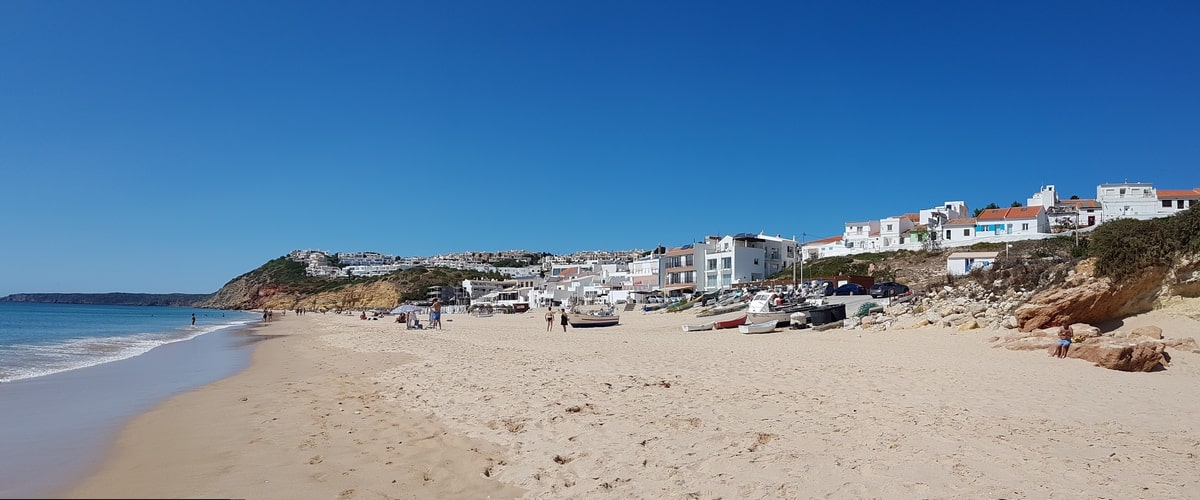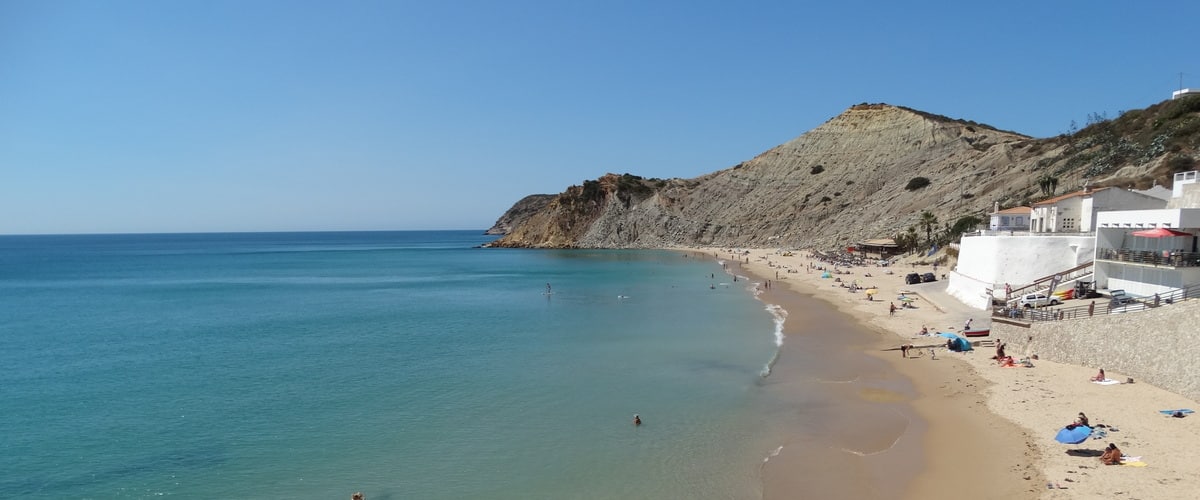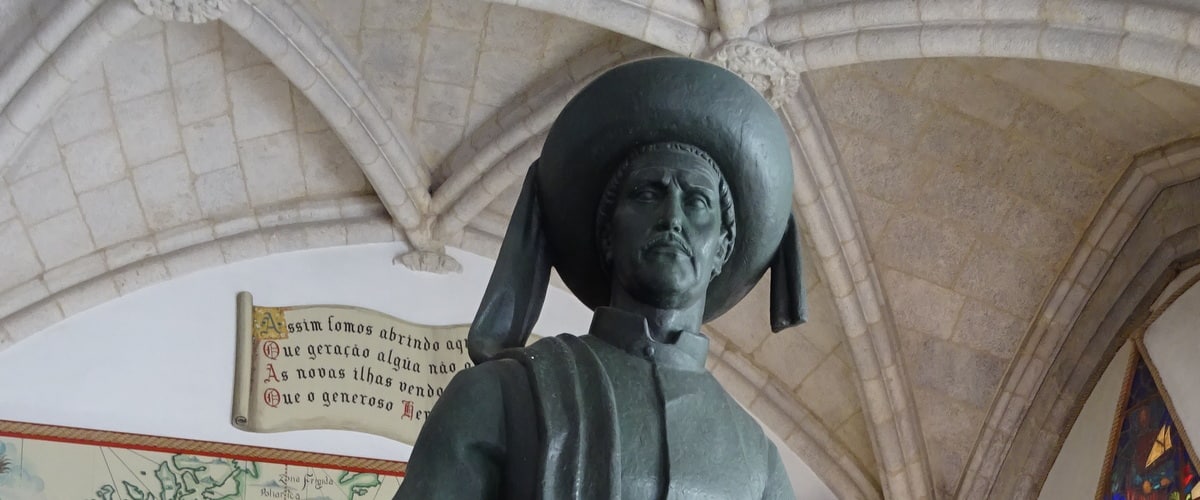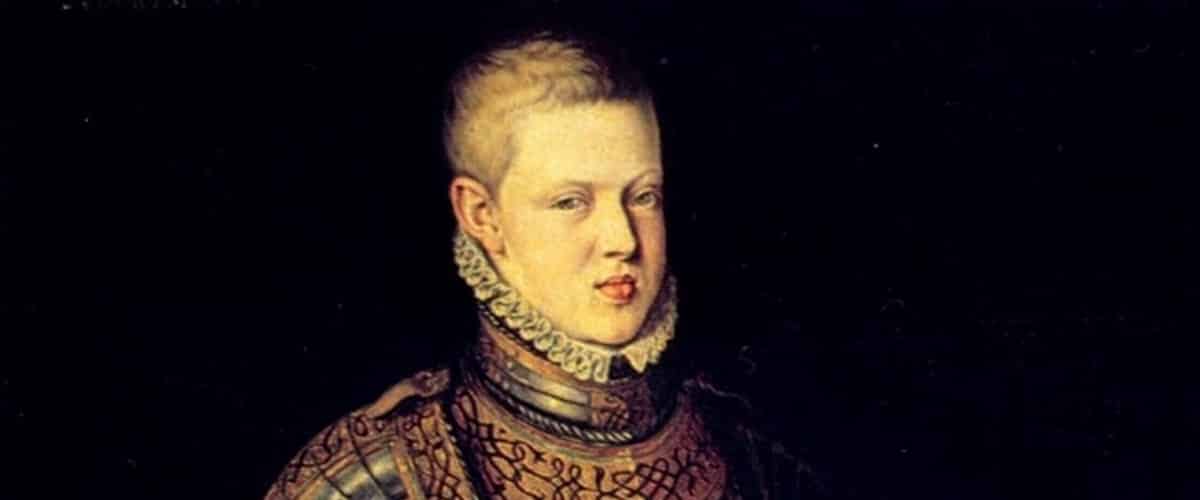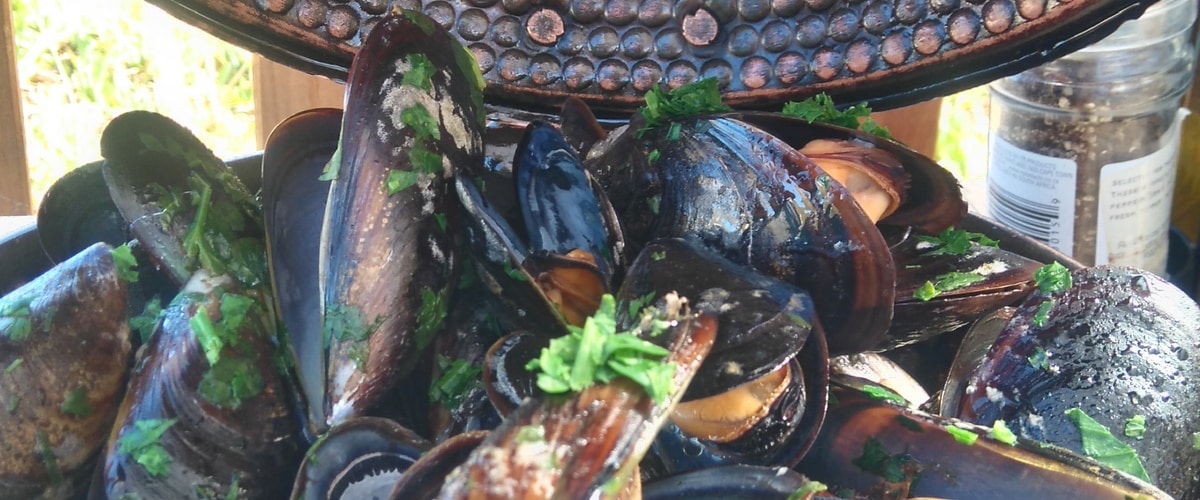Sagres
The Algarve of today is as sought after by tourists as it once was by various civilisations.
The Mediterranean people who passed through here, such as the Phoenicians, Greeks, Carthaginians and Romans, were followed by the Moors, Christians, Slaves, Pirates, Corsairs, Fishermen and Farmers.
Over the centuries, these civilisations have contributed to making the Algarve and Sagres the stage of significant events, a way of passage, arrival and meeting of navigators, an area of privileged contacts with North Africa and great strategic value.
To the Romans Cabo de S. Vicente and Ponta de Sagres were known as the Promontorium Sacrum (which gave rise to the name Sagres), the extreme western point, where the sun, at its setting, boiled the ocean waters – The end of the inhabited world.
Sagres is the last safe harbour that vessels can anchor before venturing out into the open Atlantic. Going up to the promontory, consulting the gods, fulfilling promises are gestures that make the Promontorium Sacrum an essential reference for every sailor.
Why you should visit Sagres
Surf – Sagres is known as one of the top spots to surf. It offers a wave for all levels of surf. Being on the southwest point of the Algarve means that when the waves get too big on the west coast, you just have to move around the corner to the south coast, more protected from the wind and big swells.
Wildlife – The west coast is rich in marine life. It is possible to see dolphins that follow the abundant fish on their migration through the Portuguese coast. Being part of the Costa Vicentina Natural Park, its flora and fauna are protected, with some species only to be found here. Sagres also attract hundreds of migratory birds in late summer, autumn during their flight to the African Continent. The abundance of available food, together with the coastal cliffs that provide nesting shelters, attracts a vast number of seabirds.
Small Fishing Village –A small fishing village that the surf community has adopted as their home. it offers a more laid back and relaxed vibe, even during its busiest months
What to visit in Sagres
The Fortress of Sagres
The Fortress of Sagres
Sagres gains great strategic importance from the 15th century onwards with the expansion of oceanic navigation and the Portuguese occupation of North African.
In 1443, Infante D Henrique founded the village of Sagres. His aim was to populate the land and so offer a support base for all that crossed its sea. Navigators would protect themselves from rough seas in the Sagres inlets while waiting for fair winds that would allow navigation towards the north and the escape from the strong swell that flung them against the Cape’s cliffs.
Church of Our Lady of Grace
Inside the fortress, upon the ruins of the Chapel of Santa Maria, built by Infante D. Henrique, you will find the Church of Nossa Senhora da Graça. On its altar is the image of S. Vicente holding a vessel.
Former ammunition warehouse
The voice of the sea
Do monsters still inhabit beneath?
The clefts opened in the rocks due to the erosion of the sea, on rough sea days, produce deep and visceral sounds.
The installation called “Voz do Mar (The Voice of the sea)” by Pancho Guedes stands upon a rock cleft, projecting the voice from the sea.
Compass rose
Outlined on the ground is a compass rose of 43 m in diameter.
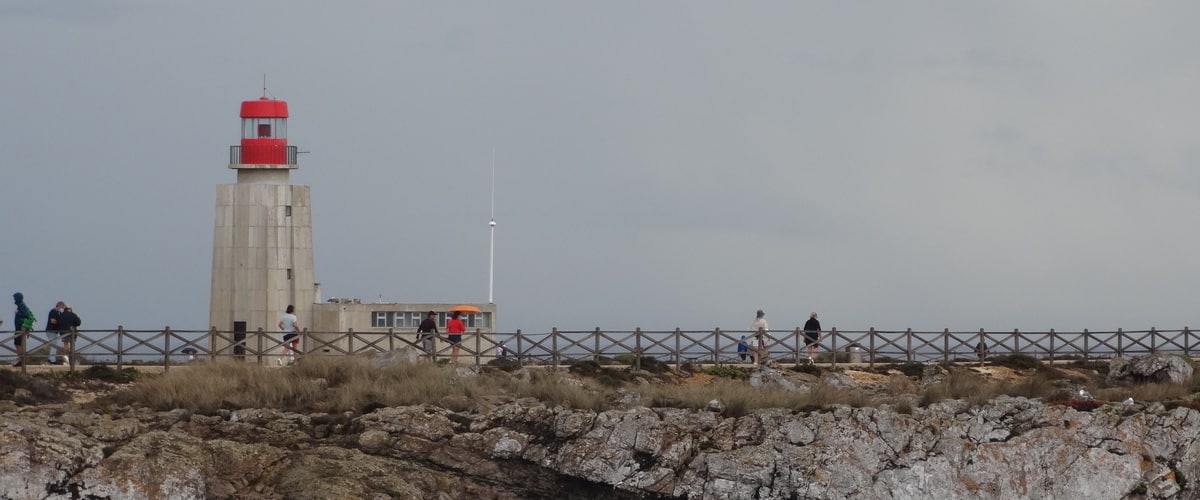
Panoramic Circuit
Around Ponta de Sagres, a path over the cliffs offers breathtaking views.
Cabo de S Vicente (Cape of Saint Vivente)
Saint Vincent was a martyred deacon of the Christian Church, persecuted by Diocletian, Roman Emperor of Iberia. He was killed in 304 in Valencia (Spain).
There he was buried until 779 when, following the siege of the city of Valencia by Muslim forces, his body was set adrift in a boat, reaching the cape that would later bear his name.
Here a Chapel was built to keep the relics, which became one of the main places of pilgrimage and Christian worship in the Islamic Iberian Peninsula, particularly Mozarabic – Christians who lived under Muslim rule.
With the conquest of Lisbon in 1147, D Afonso Henriques sought to symbolically and definitively Christianize the kingdom’s new capital with the transference of S Vicente bones – a saint of great prestige among the Christians of the Peninsula – from his tomb in the Islamic south to the Christian north.
To this end, in 1173, the 1st King of Portugal, D. Afonso Henriques, ordered that part of the remains of São Vicente be taken to Lisbon, with only a few relics remaining here.
In Lisbon, D. Afonso Henriques built a church in honour of the saint – Igreja S. Vicente de Fora – in the place where he settled his troops during the siege of Lisbon to the Moors.
It is said that the ship that carried the bones of S. Vicente was accompanied by two crows, an image that has been forever associated with the city of Lisbon.
In Cabo de S. Vicente, the Convent of S. Vicente do Cabo was founded in 1516 by Franciscan religious, who until 1834 lit bonfires to guide the ships.
In 1846, after the extinction of the Religious Orders, a lighthouse was built on the site of the convent.
Sunset
Many gather here at the end of the day due to the mysticism that still surrounds the Cape of S. Vicente or to witness a beautiful sunset.
Probably oblivious of the various accounts related by the 4th century BC authors about religious ceremonies involving libations and the prohibition of human presence at night for the promotorium belongs to the gods!
Coastal Fortresses
Beliche Fort
The need to protect the populations from frequent pirate attacks led to the heavy fortification of the coast. Adding to the key forts of Sagres and S. Vicente are Torre de Aspa, Burgau, Boca do Rio, Figueira, Zavial, Baleira and Beliche
Francis Drake, in 1587, when Portugal was under the domination of the Spanish King Filipe II, attacked and destroyed most of the Vila do Infante as part of his privateering campaign.
Porto da Baleeira (Port)
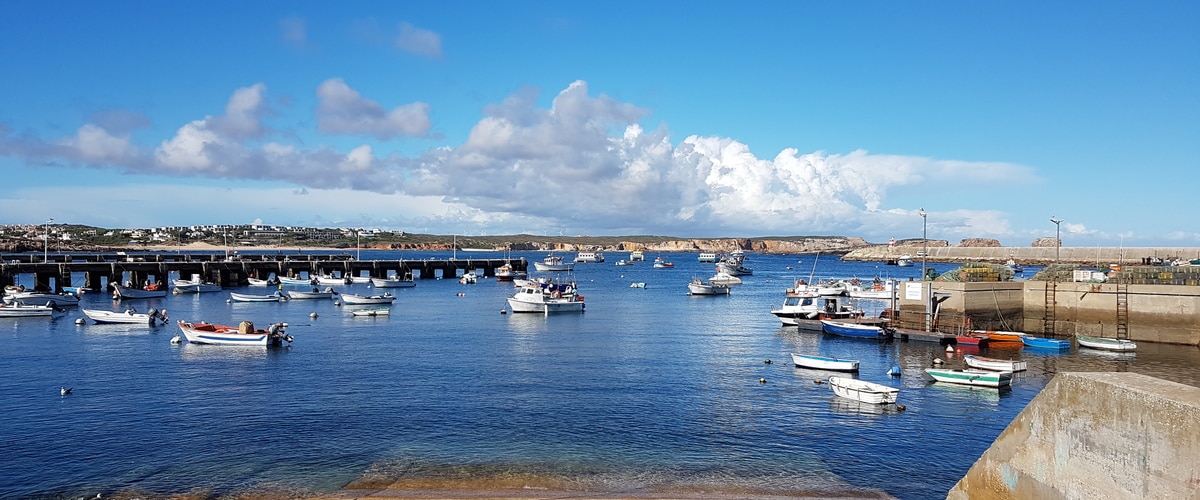
Baleeira means whale in Portuguese, and in past times, many of the boats that left this port would do so to catch whales. Nowadays, the fishing that is done is small fish, none the less it is a pleasant sight to see the fishing boats come in with their catch, unloading it and preparing the nets for the next outing. Who knows, when dining out today, one of these may end up on your plate!
Beaches around Sagres
On the west-facing coast, the sea has a higher and wilder swell. Great cliffs protect or enhance wide sandy beaches or island rocks. In opposition, the South coast has calmer, crystal clear waters with welcoming sands. Here, in the south zone, the sea only becomes revolt when the Southeast hot wind makes its appearance.
Framed by truly stunning landscapes, you will find beaches for all tastes, some wild and more secluded. It is not difficult to find tranquillity, especially on beaches such as Castelejo, Mareta, Ingrina, Zavial, Salema and Burgau.
The beaches of Cordoama, Ponta Ruiva, Tonel and Zavial are sought after by surf and bodyboard lovers. In the case of Martinhal beach, its wide bay and exposure to the wind are favourable to the practice of windsurfing.
For diving lovers, the richness of the seabed of this section of our coast is a delight.
Beaches in Sagres on the West Coast
Cordoama and Barriga Beach
Cordoama Beach is an extensive stretch of sand that stretches as far as the eye can see and merges onto Barriga Beach, accessed through cliffs.
Surrounded by cliffs, some that reach 100m, it is a popular beach for surfers.
Access by paved road. It has beach support.
Castelejo Beach
A beach surrounded by large rock formations. At low tide it connects with Praia da Cordoama. Popular with surfers but also a popular fishing spot. On the northeast side, between the rocks, it forms small pools full of marine life for the youngest to explore.
It has beach support and good access.
Ponta Ruiva Beach
Its name meaning “redpoint” comes from the red rock formations entering the sea. It is a beach much sought after by surfers, although its difficult access keeps the crowd away.
A still wild place where birds of prey are common to see. No beach support is available.
Beaches between Cabo de São Vicente and Ponta de Sagres
Sheltered beaches, nestled between Cabo de São Vicente and Ponta de Sagres that protect them from the north winds
Beliche Beach
A delightful beach that seems to have been excavated from an immense cliff. Sheltered from the cold north and west winds.
Nudists seek the west side of the beach. Beach support available
Tonel Beach
It is a beach overlooking Cabo de S. Vicente, popular with surfers and sought out by many due to its proximity to Sagres and good access. Beach support available
Beaches between Cabo de São Vicente and Ponta de Sagres
Mareta beach
Close to the urban area of Sagres, it is one of the most popular beaches, although its 700m of sand makes it possible to disperse the crowd a little. Located in a bay surrounded by high cliffs, it offers protection on windy days.
The inlet is known to be a good place to dive due to its numerous submerged caves.
Martinhal Beach
It is a beach much sought after by windsurfers for its calm waters and clean wind.
Likewise, Its iconic limestone islets, rocky inlets and submerged caves are enticing to any underwater diver.
It was an important Roman pottery centre, with three kilns for the production of amphoras. On the islets in front of the beach, traces of tanks for fish salting still remain.
Ingrina Beach
A small beach with several submerged rock formations makes it particularly interesting for those who like to dive.
Zavial Beach
It is an appealing beach for its natural beauty: cliffs, vegetation, and crystal clear waters. Sought by nudists
Furna Beach
Descend the valley along a dirt path to a stream, though almost always dry, into Praia das Furnas. It is a wild beach, with 180m of sand, few people which makes it an unofficial beach for nudists.
Called Praia das Furnas because of the existence of caves (furnas) excavated in the cliffs that surround it. There are no beach infrastructures
Salema Beach
At the foot of the picturesque fishing village of Salema. With an extensive sandy beach to walk, and appreciate the colourful boats waiting for the tide to go back to sea. Keep an eye out for the dinosaur footprints on the rocks at the end of the beach. They are more than 150 million years old and belong to an Ornithopod.
Another curiosity that this charming beach offers is a shipwreck that sunk in 1759, named L’Ocean, which has now become a diving spot.
This small village also exhibits the ruins of a Roman villa and a fish canning factory.
Burgau Beach
An urban beach but nonetheless full of charm.
The protection of its cove allows the safe entry of boats returning from the sea, bringing fresh fish and then supplying the local restaurants.
A small beach with all the infrastructure needed
Personalities linked to Sagres
Infante D. Henrique
Infante D. Henrique (1394-1460) is one of the sons of D. João I and D. Filipa de Lencastre, known as the Navigator. Deeply religious and a major force of the war against Muslims and sea expeditions, which led to the discovery or recognition of islands and important areas of the African continent. Here he established his group of wise people who would take Portugal to the world.
When D Henriques moved to his “village of Terçanabal” – so-called by reference to the most affluent Roman retreat sites – this area was considered an unpleasant, lonely and deserted place, far from the villages. Although it did experience growth due to the Infantes followers, in the decade 1450.
D. Henrique died here on November 13, 1460
D. Sebastião
D. Sebastião (1554-1578) Due to his avid dispute with the Moors, his visits to Sagres were frequent. Here he built a palace and implemented a defence system to protect the Sagres Coastline
Grandson of D. João III, his birth was much celebrated for assuring the succession of the Portuguese crown. A zealous religious and military man that strove to prepare a highly efficient army and gain military prestige.
He died in North Africa, in the battle of Alcácer Quibir, leaving no descendants, paving the way for the delivery of the Portuguese crown to the Filipes of Spain.
The myth of “Sebastianism” was born around him – the hope that he would return, one foggy day, to save Portugal from all its problems.
D. Carlos
D. Carlos (1863-1908) passed through Sagres during his various oceanographic campaigns
Son of Rainha D. Maria Pia and D. Luis he was the penultimate King of Portugal. An innate naturalist, he revealed a profound inclination towards the sea from an early age. He had been brought up to be King, exhibiting an aptitude for the arts and sport, being always much given to the observation of nature, particularly in the area of ornithology and oceanography.
What to taste
Local gastronomy is the result of the combination of the flavours of the land and the sea. Among the variety of dishes, we highlight the grilled fish, the fish or mussel cataplana, octopus rice, cuttlefish feijoada (beans), the Xarém and the limpets with roasted figs and mussel porridge.
Vila do Bispo is called the Capital of Goose Barnacles, a type of seafood that is only found in certain points of the Atlantic coast and that on the West coast, it gains a unique flavour.
Regarding meat dishes, Vila do Bispo, as a hunting ground, serves dishes made with hare, partridge, wild rabbit and wild boar.
Almonds and figs form the basis of many desserts such as fig “Morgado” and fig cheese.
Religious Festivaties
January 22 – Saint Vincent’s Day. In the past, the street floor was covered with rosemary, and the best bedspreads decorated the balconies.
February 2 – Nossa Senhora da Candeia (Our Lady of the Light). It is celebrated in the Chapel of Nossa Sra de Guadalupe. With a procession of candles around the temple, popular belief said that if the candles entered the church alight, they would have a good year of peas.
August 15th – Nossa Sra da Graça. Annually, fishermen participate in a maritime procession, decked out in their boats that depart from Porto da Baleeira, accompanying the vessels that carry the images of Nossa Sra da Graça and S. Vicente. After a recitation by the parish priest on the high seas, a wreath is launched in memory of the deceased fishermen. Back to Porto da Baleeira, a mass is held, followed by a land procession to Vila de Sagres’ church.
December 8 – Our Lady of the Conception Santa Patron of Vila do Bispo. A procession that passes through the main streets of the town.
Getting to Sagres
Handpicked Tours in Sagres
Sagres you live the sea. Be it fishing, scuba diving, surfing or beach-going. A laid back atmosphere, that allies nautical activities to the simple pleasures of life
Enjoy Portugal with holiday-active.com and make the most of your holidays in Sagres
Where to stay in Sagres? Our Suggestions

Aldeia da Pedralva
Built upon the ruins of an old traditional Portuguese village, it offers self-catering villas decorated with simplicity and comfort.
The hotel’s restaurant offers local dishes and fresh seafood as well as light snacks.
Algarve beaches are just a few minutes with great waves for surfing. It is also a good glorious for biking and birdwatching.
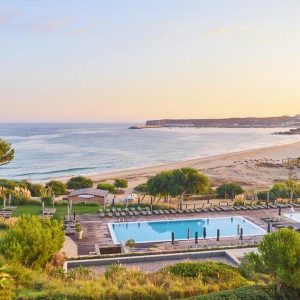
Martinhal Beach Family Resort
A 5-star hotel designed for families offering activities for children of all ages. With five swimming pools, the central one right in front of the beach, a kids club, tennis courts, three restaurants and 4 bars
All rooms and villas have private balconies and terraces.
.
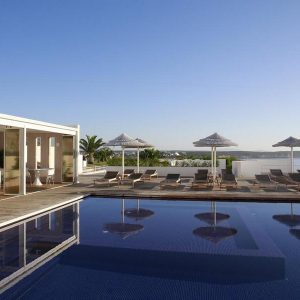
Memmo Baleeira
A hotel directed at family, sea and well being
With 144 rooms with small terraces and decorated with simplicity, comfort, and the beauty of waking up to see the sea.
It has its surf school to start or perfect your surfing technique.
A place to drift into the intrinsic way of life of Sagres in all comfort

 English
English

